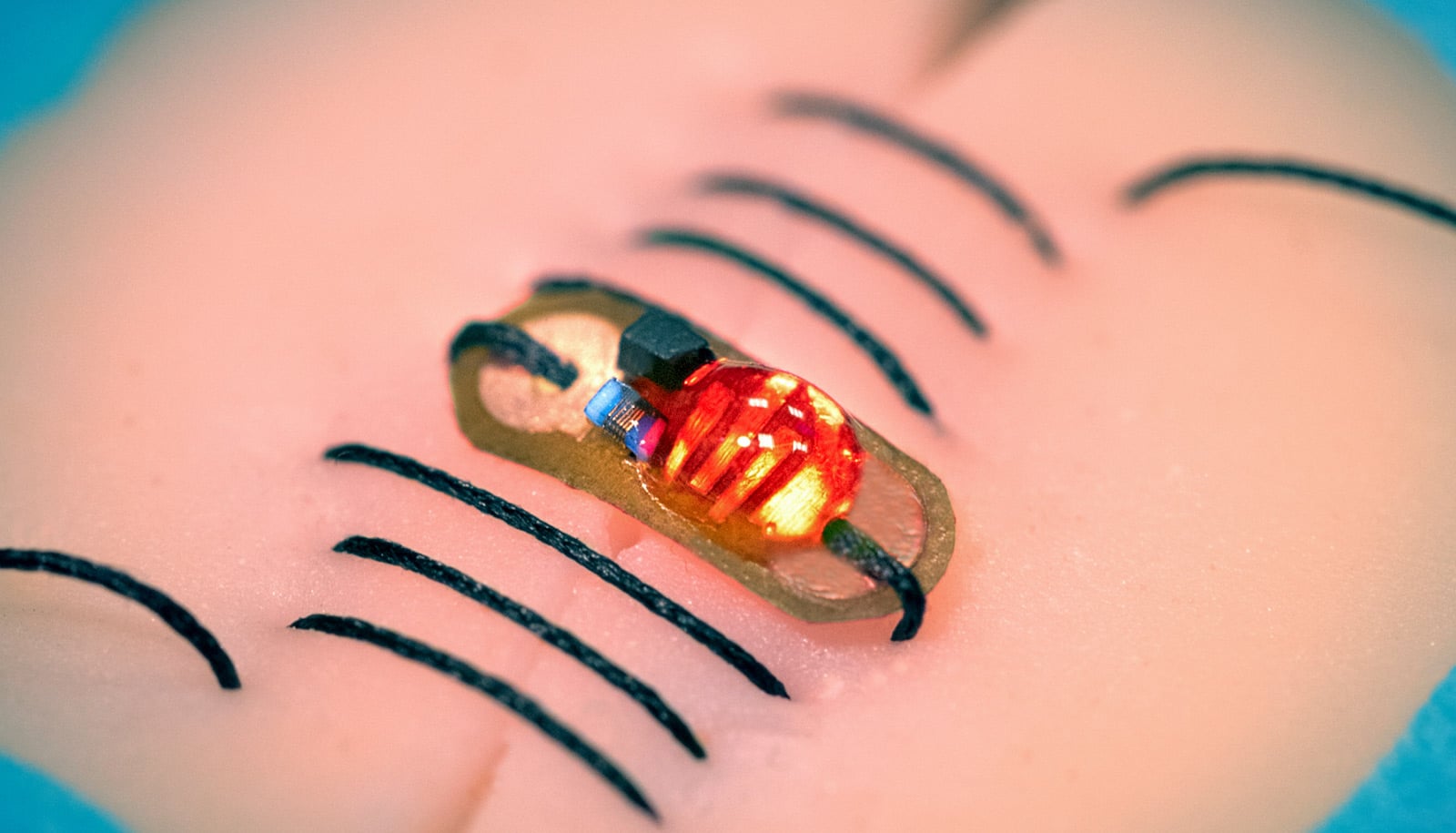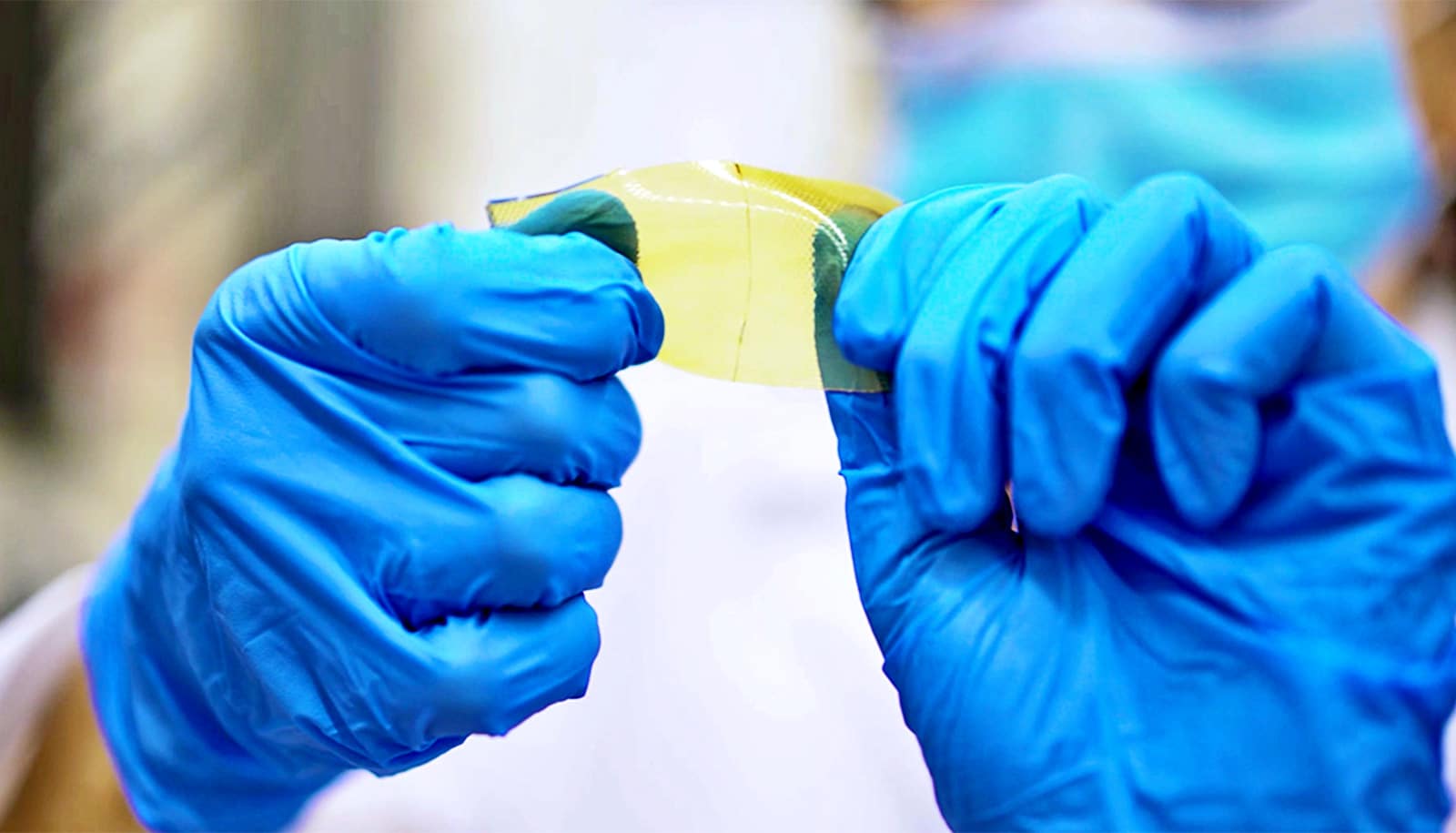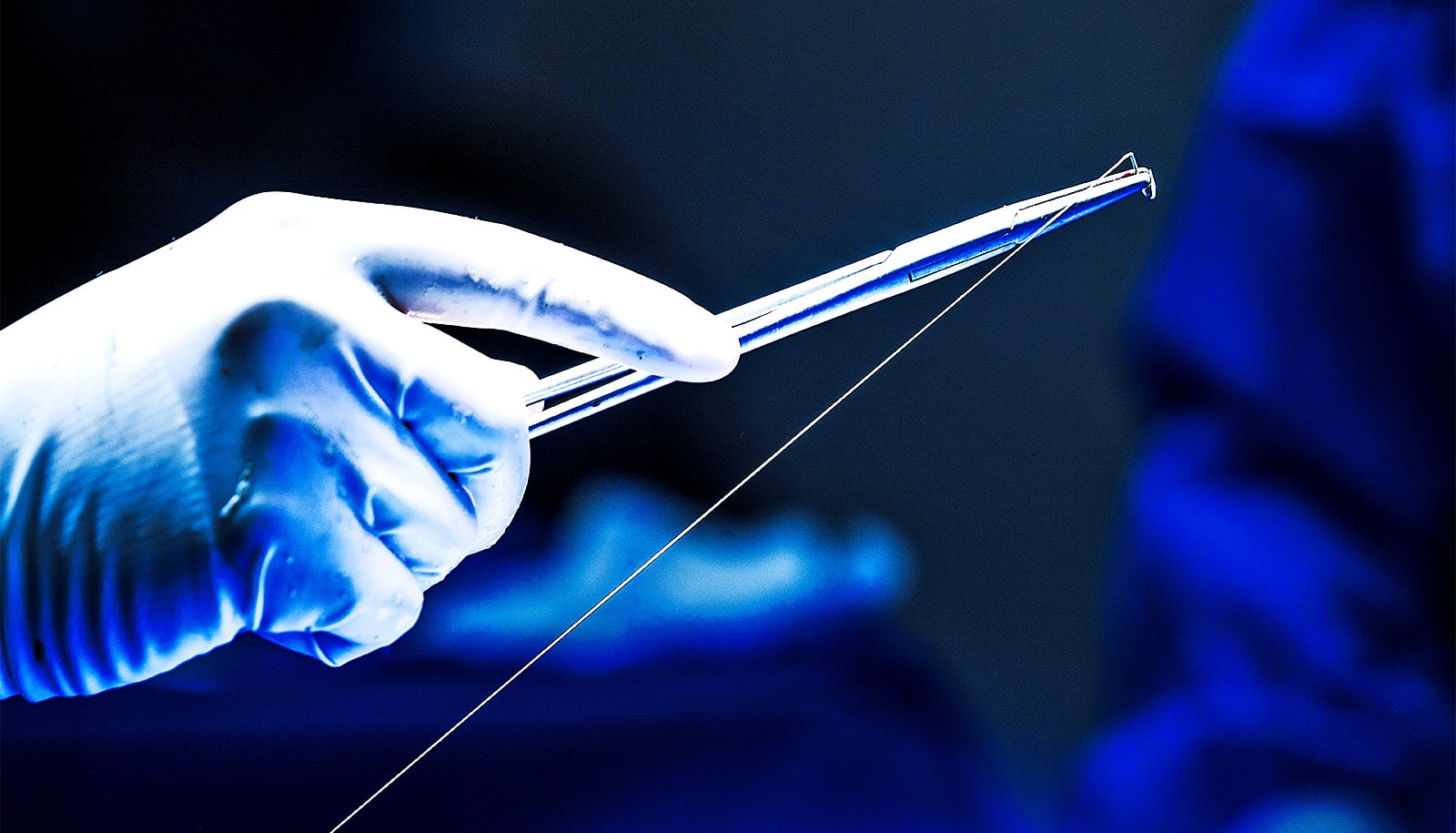To detect wound complications as soon as they happen, researchers have invented a battery-free “smart suture” that can wirelessly sense and transmit information about wounds from deep surgical sites.
Monitoring surgical wounds after an operation is an important step to prevent infection, wound separation, and other complications.
However, when the surgical site is deep in the body, monitoring is normally limited to clinical observations or costly radiological investigations that often fail to detect complications before they become life-threatening. Hard bioelectronic sensors can be implanted in the body for continuous monitoring, but may not integrate well with sensitive wound tissue.
The new smart sutures incorporate a small electronic sensor that can monitor wound integrity, gastric leakage, and tissue micromotions, while providing healing outcomes which are equivalent to medical-grade sutures.
How do the smart sutures work?
The invention has three key components: a medical-grade silk suture coated with a conductive polymer to allow it to respond to wireless signals, a battery-free electronic sensor, and a wireless reader used to operate the suture from outside the body.
One advantage of these smart sutures is that their use involves minimal modification of the standard surgical procedure. During the stitching of the wound, the insulating section of the suture is threaded through the electronic module and secured by applying medical silicone to the electrical contacts.
The entire surgical stitch then functions as a radio-frequency identification (RFID) tag and can be read by an external reader, which sends a signal to the smart suture and detects the reflected signal. A change in the frequency of the reflected signal indicates a possible surgical complication at the wound site.
The smart sutures can be read up to a depth of 50 mm (about 2 inches), depending on the length of stitches involved, and increasing the conductivity of the suture or the sensitivity of the wireless reader could potentially further extend the depth.
Similar to existing sutures, clips, and staples, the smart sutures may be post-operatively removed by a minimally invasive surgical or endoscopic procedure when the risk of complications has passed.
Early alert
To detect different types of complications—such as gastric leakage and infection—the research team coated the sensor with different types of polymer gel.
The smart sutures are also able to detect if they have broken or unraveled, for example, during dehiscence (wound separation). If the suture is broken, the external reader picks up a reduced signal due to a reduction in the length of the antenna formed by the smart suture, alerting the attending doctor to take action.
In experiments, the team showed that wounds closed by the smart sutures and unmodified, medical-grade silk sutures both healed naturally without significant differences, with the former providing the added benefit of wireless sensing.
The team also tested the polymer-coated sutures and found its strength and biotoxicity to the body was indistinguishable from normal sutures, and also ensured that the power levels needed to operate the system were safe for the human body.
“Currently, post-operative complications are often not detected until the patient experiences systemic symptoms like pain, fever, or a high heart rate,” says John Ho, assistant professor from National University of Singapore Electrical and Computer Engineering and the NUS Institute for Health Innovation & Technology.
“These smart sutures can be used as an early alert tool to enable doctors to intervene before the complication becomes life-threatening, which can lead to lower rates of re-operation, faster recovery, and improved patient outcomes.”
In the future, the team is looking to develop a portable wireless reader to replace the setup currently used to wirelessly read out the smart sutures, enabling surveillance of complications even outside of clinical settings. This could enable patients to be discharged earlier from the hospital after surgery.
The team is now working with surgeons and medical device manufacturers to adapt the sutures for detecting wound bleeding and leakage after gastrointestinal surgery. They are also looking to increase the operating depth of the sutures, which will enable deeper organs and tissues to be monitored.
The study is published in Nature Biomedical Engineering .
Source: NUS



